I am using windows authentication without impersonation on my company's intranet website with IIS7.
Under IIS7, what account is used to access the folder which contains my web app using these settings?
Would it be IIS_IUSRS? Or NETWORK SERVICE? Or another I don't know about?



